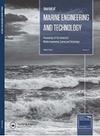数字工程:扩大优势
IF 4.4
4区 工程技术
Q1 Engineering
Journal of Marine Engineering and Technology
Pub Date : 2022-01-12
DOI:10.1080/20464177.2021.2024382
引用次数: 1
摘要
数字化转型——将数字技术普遍融入到几乎每一个过程和系统中——可以说是海军工程界变革的最大力量。数字创新正在颠覆传统的船舶设计范式,并产生了现代化和维持未来综合力量结构的新方法。本文强调数字化转型是与美国国防部数字工程战略相一致的核心战略举措。认识到需要扩大美国海军对其竞争对手的优势,本文确定了改变当前工程设计和开发过程所需的基本要素。接下来,介绍了一个多因素框架,将用于物理系统设计和开发的传统过程与新的数字范式结合起来,以识别基于模型的系统工程(MBSE)的高度集成性质。最后,讨论将重点关注正在进行的利用先进计算模型的工作,并强调海军动力和能源系统(NPES)的数字工程用例。本文章由计算机程序翻译,如有差异,请以英文原文为准。
Digital engineering: expanding the advantage
ABSTRACT Digital transformation – the pervasive incorporation of digital technology into virtually every process and system – is arguably the greatest force of change within the naval engineering community. Digital innovation is disrupting traditional ship design paradigms and giving rise to new ways of modernising and sustaining a future integrated force structure. This paper highlights digital transformation as a core strategic initiative that is aligned with the U.S. Department of Defense Digital Engineering Strategy. Recognising the need to expand the U.S. Navy’s advantage over its competitors, this paper identifies foundational elements required to transform current engineering design and development processes. Next, a multi-factor framework is introduced to align traditional processes employed for physical system design and development with a new digital paradigm in recognition of the highly integrated nature of Model Based Systems Engineering (MBSE). Finally, discussion will focus on efforts underway to leverage advanced computational models and highlight the digital engineering use case for Naval Power and Energy Systems (NPES).
求助全文
通过发布文献求助,成功后即可免费获取论文全文。
去求助
来源期刊

Journal of Marine Engineering and Technology
工程技术-工程:海洋
CiteScore
5.20
自引率
0.00%
发文量
0
审稿时长
>12 weeks
期刊介绍:
The Journal of Marine Engineering and Technology will publish papers concerned with scientific and theoretical research applied to all aspects of marine engineering and technology in addition to issues associated with the application of technology in the marine environment. The areas of interest will include:
• Fuel technology and Combustion
• Power and Propulsion Systems
• Noise and vibration
• Offshore and Underwater Technology
• Computing, IT and communication
• Pumping and Pipeline Engineering
• Safety and Environmental Assessment
• Electrical and Electronic Systems and Machines
• Vessel Manoeuvring and Stabilisation
• Tribology and Power Transmission
• Dynamic modelling, System Simulation and Control
• Heat Transfer, Energy Conversion and Use
• Renewable Energy and Sustainability
• Materials and Corrosion
• Heat Engine Development
• Green Shipping
• Hydrography
• Subsea Operations
• Cargo Handling and Containment
• Pollution Reduction
• Navigation
• Vessel Management
• Decommissioning
• Salvage Procedures
• Legislation
• Ship and floating structure design
• Robotics Salvage Procedures
• Structural Integrity Cargo Handling and Containment
• Marine resource and acquisition
• Risk Analysis Robotics
• Maintenance and Inspection Planning Vessel Management
• Marine security
• Risk Analysis
• Legislation
• Underwater Vehicles
• Plant and Equipment
• Structural Integrity
• Installation and Repair
• Plant and Equipment
• Maintenance and Inspection Planning.
 求助内容:
求助内容: 应助结果提醒方式:
应助结果提醒方式:


